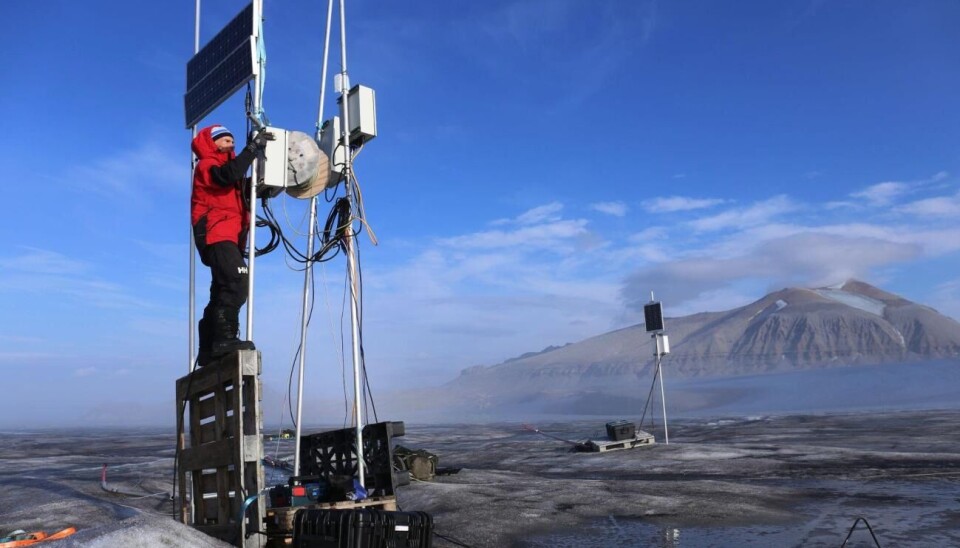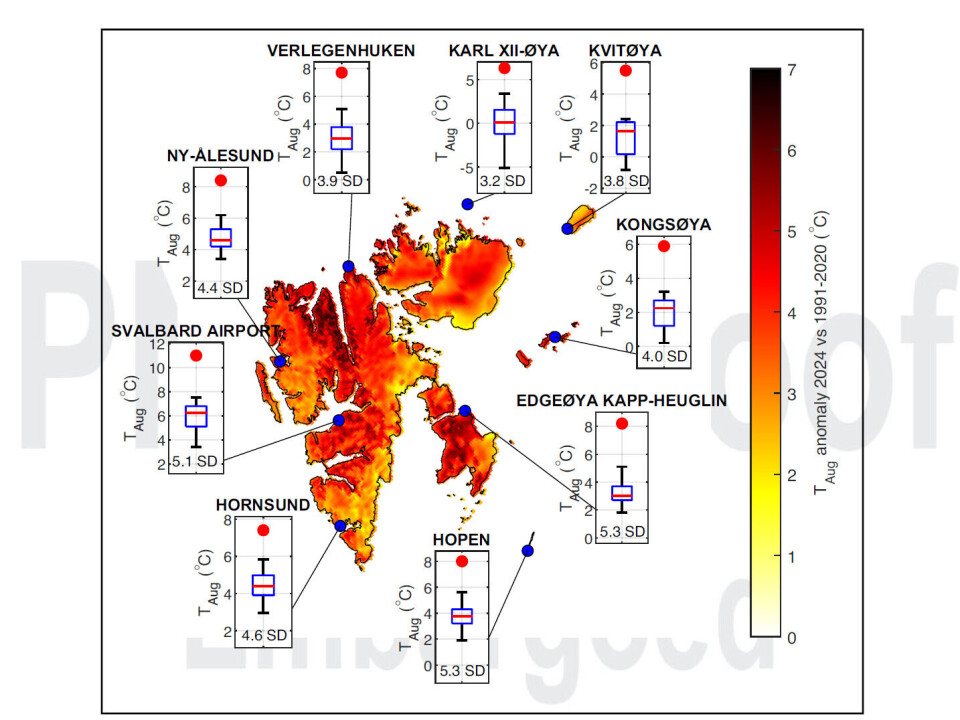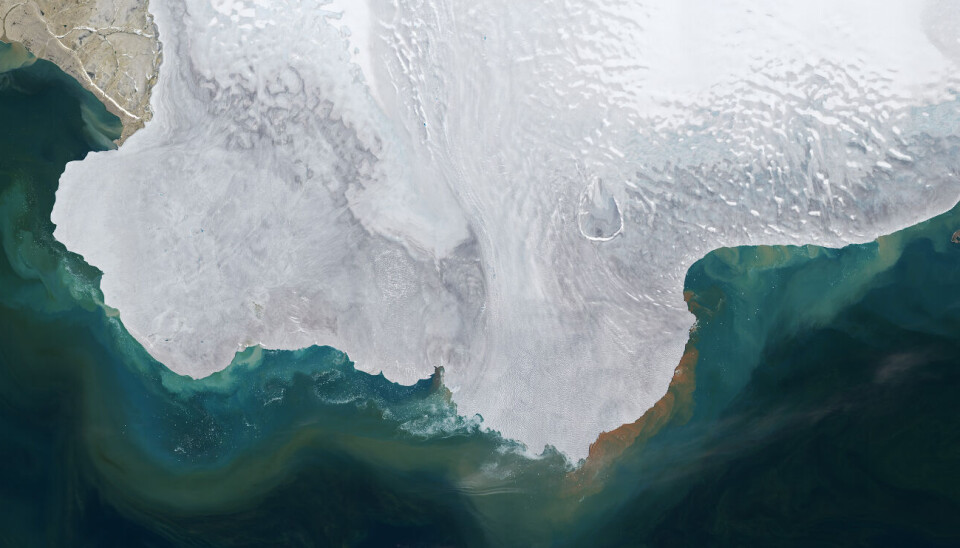Extreme phenomenon on Svalbard:
"Oh, something different happened here"
During the summer of 2024, extreme amounts of ice melted on Svalbard.

During six weeks in the summer of 2024, Svalbard experienced extreme ice melting.
"Records keep being broken, but usually by small margins," Thomas Vikhamar Schuler tells Science Norway. He is a professor of geoscience at the University of Oslo and led the work on the new study.
But there were no small margins this time. The previous record was around 40 billion tonnes of ice that melted from the glaciers in 2022, according to NASA.
In the summer of 2024, the glaciers on Svalbard lost more than 60 billion tonnes of ice, according to the new study published in the journal PNAS.
"Oh, this was something different from anything we’ve seen before," Schuler says after reviewing the results.
This loss is comparable to what the Greenland ice sheet lost over the same period. But the Greenland ice sheet is 50 times larger than the glaciers on Svalbard.
The researchers' graph below shows how the ice mass followed a normal development through the winter of 2023/2024, as snow and ice accumulated.
But then came the summer of 2024. The ice masses dropped far below the usual variation, according to the researchers' calculations.
Why did this happen?

Air temperatures over Svalbard were so high that, statistically, such conditions occur only once every 1,000 years, Schuler explains.
The warm air came from southern Europe and lingered over Svalbard for six weeks, and most of the melting occurred during this period.
"Last summer's temperatures were far beyond what we've experienced before," says Schuler.
The map below shows how the temperature deviates drastically from the normal temperatures. Normally, August at Svalbard Airport averages around 6 degrees Celsius. In August 2024, they reached 12 degrees.
Researchers observed the same pattern across all of Svalbard.
The result: record-breaking ice melting, according to the new study.

Exceptional land uplift
The new study is partly based on glacier monitoring data from the Norwegian Polar Institute, which track glacier changes over several decades.
"This is very valuable, but it only covers a few individual glaciers," says Schuler.
Most of the records come from parts of Svalbard that are close to inhabited areas. There are also measurements from more remote glaciers, but to a lesser extent.
These results are also fed into data models that estimate how much ice there is on Svalbard and how much has been lost, Schuler tells Science Norway.
To test the models, the researchers also used measurements from the Norwegian Mapping Authority, which showed that Svalbard went through an extreme period of land uplift.
Normally, the ice masses weigh the land down. But in 2024, Svalbard rose by 20 millimetres, according to the Norwegian Mapping Authority's website (link in Norwegian).
This indicates that a large amount of ice melted in 2024.
"The seasonal land uplift last year was completely exceptional," says Schuler.

Satellites and the future
Satellite measurements have been used to estimate how much ice flowed into the sea and to calculate the balance between snowfall and melting in 2024.
The researchers went further, analysing future scenarios based on different emission levels. Their results suggest that the temperatures of summer 2024 could become much more common in the near future – even with moderate emission levels.
This means that glaciers on Svalbard will likely continue to shrink, and that extreme melting events like in 2024 will occur more frequently.
Most viewed
In total, around 1 per cent of all the ice on Svalbard disappeared in the summer of 2024. There will still be large variations from year to year, but by the end of this century the landscape of Svalbard will have changed a lot, and the glaciers will be much smaller, according to Schuler.
"An extraordinary summer"
"Climate change may be unfolding even faster than we imagined just a few years ago," Eirik Malnes tells Science Norway.
He is the chief scientist for Earth observation at the research institute NORCE. Malnes reviewed the new study for Science Norway but was not involved in the research himself.
He calls last year's ice loss extreme.
"It's truly extreme that tiny Svalbard experienced as much melting as all of Greenland combined," he says.
He considers the study solid and credible, though he notes it could be followed up with more satellite measurements.
Malnes highlights the LIQUIDICE project, which uses satellites to study a selection of glaciers that are particularly vulnerable to melting.
"There's also major work underway to build new satellites capable of more frequent and continuous measurements," he says.
Malnes points out that it was not just Svalbard that experienced extreme melting last year.
"Northern Norway also experienced absolutely extreme melting," he says.
———
Translated by Alette Bjordal Gjellesvik
Read the Norwegian version of this article on forskning.no
Reference:
Schuler et al. Svalbard’s 2024 record summer: An early view of Arctic glacier meltdown?, PNAS, 2025. DOI: 10.1073/pnas.2503806122
Related content:

Subscribe to our newsletter
The latest news from Science Norway, sent twice a week and completely free.


























































